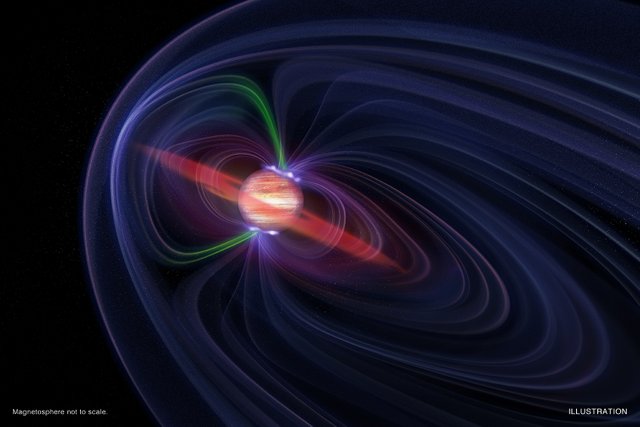

If scientists can connect the X-ray activity with physical changes observed simultaneously with Juno, they may be able to determine the process that generates the Jovian auroras and by association X-ray auroras at other planets.
One theory that the X-ray and Juno observations may help to prove or disprove is that Jupiter's X-ray auroras are caused by interactions at the boundary between Jupiter's magnetic field, which is generated by electrical currents in the planet's interior, and the solar wind, a high-speed flow of particles streaming from the Sun. The interactions between the solar wind and Jupiter's magnetic field can cause the latter to vibrate and produce magnetic waves. Charged particles can surf these waves and gain energy. Collisions of these particles with Jupiter's atmosphere produce the bright flashes of X-rays observed by Chandra and XMM. Within this theory the 11-minute interval would represent the time for a wave to travel along one of Jupiter's magnetic field lines.
Hi! I am a robot. I just upvoted you! I found similar content that readers might be interested in:
http://spaceref.com/jupiter/jupiters-independently-pulsating-x-ray-auroras.html
Downvoting a post can decrease pending rewards and make it less visible. Common reasons:
Submit